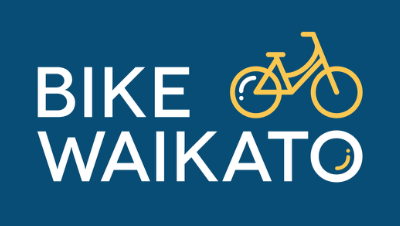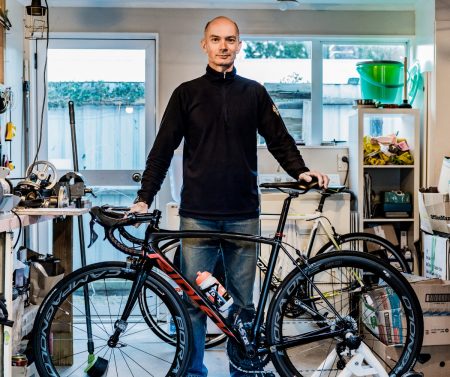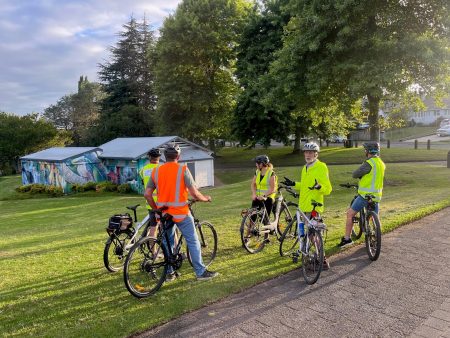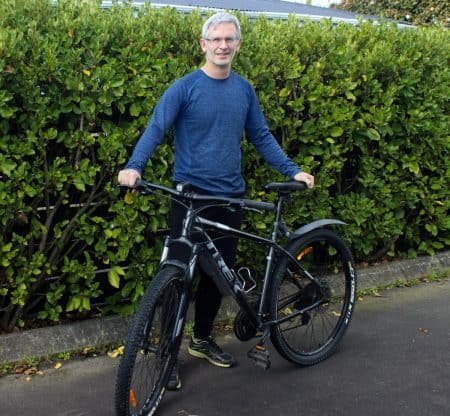2022 Candidate Responses – HCC part 2
The second in series of posts where we are publishing the answers from candidates for the 2022 local elections who provided us with responses to active and sustainable transport questions.
Working out who to vote for in the 2022 local elections can be a tough choice when it is hard to tell what values candidates are bringing to the table. Often we want to vote for candidates who understand the issues we face and can speak for our needs when it comes to investment, especially in transport.
At the beginning of September Bike Waikato sent out questions, focussed on sustainable and active transport, to candidates in three main areas to provide their views on funding and improvements for alternative modes of transport. We contacted candidates in Hamilton City, Waikato Region Hamilton Ward and Waipa District.
We hope this helps you make some informed decisions when you come to filling out your voting papers.
Maxine van Oosten – Hamilton East Ward
Question 1: What modes of active and public transport do you use, and for what types of trips?
I ride my bike for short trips around my home, to run errands & meet friends, sometimes cycle to Council meetings (but it’s hard in a skirt). I love to explore the City cycling infrastructure on my bike in the weekends.
I enjoy taking the bus from time to time and look forward to the Transport Centre upgrade!!
Question 2: What are your ideas to make it safer for people on bikes to ride in our towns and cities, particularly around schools?
I’m super excited about the School Link project along Peachgrove & Hukanui Roads, it will see a safe and enjoyable cycleway for thousands of students to 20 schools along the route. We must find a safe way for cyclists to get across the river – I want to see a walking and cycling bridge built as part of the City to Uni link.
Other initiatives such as the introduction of a 30kmph speed limit in school zones will help with safety.
Question 3: What is your position on reallocating road space (either on-street parking or traffic lanes) towards space for people on bikes?
I’m supportive of reallocating our road spaces for people on bikes but we will need to work with business owners, shopkeepers & retailers to understand & overcome their issues and lets sort out the unsafe intersections.
It would be great to see prioritisation of cyclists on our roads, something like the Dutch have.
Let’s try Dutch roundabouts, right of way for cyclists, a kids cycling exam at primary school, slow speed zones around our Schools.
Question 4: Where do you think Council should focus its education initiatives for transport and road safety?
I’ve been supportive of road safety initiatives and voted in favour of a School Travel Plan pilot in this years Annual Plan. It would be great to see this expanded in future years. Poor driver attitudes to cyclists is an issue, so a local and national education campaign would be great to see.
We have trained safety experts in Hamilton City Council & the wider cycling community. It would be great to fund a safe cycling programme in partnership with Waka Kotahi, Ministry of Education & other interested organisations.
Question 5: Do you think Council should spend more, less or about the same on cycling infrastructure as proposed in the 2021-31 Long Term Plan? Explain your answer.
Increased investment in cycling infrastructure will lead to a greater take up of mode shift and reduce carbon emissions. What’s not to love here!! BUT it will have to be matched by Waka Kotahi, so a better, more streamlined & fairer funding system is needed.
Anna Casey-Cox – Hamilton East Ward
Question 1: What modes of active and public transport do you use, and for what types of trips?
I travel to my work and community and trust board meetings primarily on my electric bike. I also travel on my bike to social events at friends houses or downtown.
Question 2: What are your ideas to make it safer for people on bikes to ride in our towns and cities, particularly around schools?
Separated cycleways are the safest option for our children to get to school. I’ve been waiting for the School Link cycleway for years now. My children are now nearly finished their schooling and have missed out on the opportunity to have safe cycleways to school. Personally, I find the cycle wands improve cycle safety because cars are less likely to cross into the cycleway when making a left-hand turn. I would like to see an increased use of cycle wands as we transition to separate cycles ways across the city. I also appreciate the traffic control lights that give cyclists the head start . I would like to see these being used at all our intersections. I would like to see parking (aside from disability parking) at the school gate restricted. Parking at least 400m away from school and walking to the gates has been shown to reduce the risks of crashes and injuries. I would also like to see bike friendly safe speed areas around schools.
Question 3: What is your position on reallocating road space (either on-street parking or traffic lanes) towards space for people on bikes?
I would like to see increasing amounts of road space reallocated towards space for people on bikes. Victoria Street is a prime example of the potential for this – one of southbound lanes should be allocated to cycling. Many people are hesitant to bike in our city due to safety concerns. 51% of people don’t currently bike at all, but have indicated an openness to start. Increasing the allocation of road space to cycleways would significantly improve the safety of biking in our city and get more people on bikes.
Question 4: Where do you think Council should focus its education initiatives for transport and road safety?
I think the school bike safety and education programmes should be a focus. I also know, and have talked with many people, who are nervous to get on a bike because they have not been on one for years. I think we need greater levels of community education for biking to support people to develop their confidence in biking around our city. The more bikes there are on our roads, the safer biking will become. Our community centres, like Go Eco and our Community Houses, can be instrumental in providing this community education. This community education should be resourced by Council.
Question 5: Do you think Council should spend more, less or about the same on cycling infrastructure as proposed in the 2021-31 Long Term Plan? Explain your answer.
I think Council should spend more on cycling infrastructure. In order to achieve the objectives of the Council’s Biking and Micro-mobility Programme, Council needs to increase their current funding allocation. If we are serious about climate action in our city and reducing emissions, this is the kind of investment that we will need to make. Increasing our investment in cycle infrastructure will save us money in the long-run through reduced road maintenance costs, and we will also be healthier for the shift to greater active transport.
Jacqui Stokes – Hamilton East Ward
Question 1: What modes of active and public transport do you use, and for what types of trips?
I walk and cycle to access the shops and friends local to me 2-3km
Question 2: What are your ideas to make it safer for people on bikes to ride in our towns and cities, particularly around schools?
Wider paths that allow both walkers and bikes. Especially on school routes. I would like to see Victoria Street between Bryce and Hood Streets become a shared area where pedestrians and cycles have right of way.
Question 3: What is your position on reallocating road space (either on-street parking or traffic lanes) towards space for people on bikes?
Especially on some of the busier roads I can see people pushing back at this idea. But we must make room for cyclists to be able to get around the city safely. Some streets are full of workers cars so we need to think about where they will park and why their work place can provide parking or what is stopping them from catching a bus or cycling to work. Negotiation will happen before we can get cycle lanes on some roads.
Question 4: Where do you think Council should focus its education initiatives for transport and road safety?
Education can start with children. Running bike bus programs for children helps them and their parents being more confident about them cycling. Better signage on roads reminding drivers to watch out for cycles especially in areas where people park to remind them to look before opening their doors.
Question 5: Do you think Council should spend more, less or about the same on cycling infrastructure as proposed in the 2021-31 Long Term Plan? Explain your answer.
I think the spending is about right. While it would be nice to have a good cycling infrastructure in place sooner we need to take all of the community with us. This means getting motorists on board with the changes that need to be made. I have noticed as the cycling around the city improves more people are willing to give cycling a go especially with more ebikes around.
Jake Tait – Hamilton East Ward
Question 1: What modes of active and public transport do you use, and for what types of trips?
I normally walk if I can. I have, however, recently discovered the joy of the Lime Scooter and might be keen to get my own electric scooter at some point.
Question 2: What are your ideas to make it safer for people on bikes to ride in our towns and cities, particularly around schools?
I would like to see councils around New Zealand start making waves towards a car free city. Other cities around the world are starting this process and some have made incredible progress!
Question 3: What is your position on reallocating road space (either on-street parking or traffic lanes) towards space for people on bikes?
Like I said in my previous answer, we need to start looking at facilitating bikes and people. Cycling and public transport are viable alternatives to a car filled city.
Question 4: Where do you think Council should focus its education initiatives for transport and road safety?
I think younger people are pretty clear already on what they want when discussing road safety, at least from the conversations that I have been having. I would like council to start focusing more efforts on older people in the city and provide incentives for them to be reeducated around new systems and layouts.
Question 5: Do you think Council should spend more, less or about the same on cycling infrastructure as proposed in the 2021-31 Long Term Plan? Explain your answer.
I think council should spend around the same or slightly more coupling that with fazing out cars from the city centre lessening the over all cost when it comes to maintaining motor vehicle infrastructure. Ultimately, by having less cars the city would have safer, more fluid streets and wouldn’t need to spend as much on cycleways or other types of infrastructure. Other cities are doing it and it is showing great promise, we can absolutely manage to have the same for Kirikiriroa.
Jess Hona – Hamilton East Ward
Question 1: What modes of active and public transport do you use, and for what types of trips?
My family and I use private vehicle and bus. We did have bikes but unfortunately we fell in the ditch and got rid of our bikes because it was unsafe riding side by side with vehicles.
Question 2: What are your ideas to make it safer for people on bikes to ride in our towns and cities, particularly around schools?
Introduce speed bumps and bike signages around schools.
Question 3: What is your position on reallocating road space (either on-street parking or traffic lanes) towards space for people on bikes?
I agree to allocate space because we want to build confidence back into society and have a presence of bikes back on the streets.
Question 4: Where do you think Council should focus its education initiatives for transport and road safety?
Introduce education initiatives/programmes at schools, organisations and agencies that work with children. Introduce children obtaining their bike license as well as bike signage around the city.
Question 5: Do you think Council should spend more, less or about the same on cycling infrastructure as proposed in the 2021-31 Long Term Plan? Explain your answer.
I do think they should stay the same for now with the undertaking of a review to look at it again. LTP’s can be flexible whereby the current climate could change and there could be a need to review again. We have a beautiful city that has the ability to craft and show off all the iconic areas all around but firstly we must rebuild trust back into the public that it is safe to bike for all.
Mark Donovan – Hamilton East Ward
Question 1: What modes of active and public transport do you use, and for what types of trips?
Car, Bike, Bus – for all trips – sport, leisure and work
Question 2: What are your ideas to make it safer for people on bikes to ride in our towns and cities, particularly around schools?
Sensible traffic calming measures on busy roads and off-road dedicated cycle ways
Question 3: What is your position on reallocating road space (either on-street parking or traffic lanes) towards space for people on bikes?
After my own personal experience recently and listening to the people I have met over the last several months it remains that we should be allocating space to cyclists where it makes practical and safe sense
Question 4: Where do you think Council should focus its education initiatives for transport and road safety?
Driver education is very important on how to behave in the presence of cyclists.
Question 5: Do you think Council should spend more, less or about the same on cycling infrastructure as proposed in the 2021-31 Long Term Plan? Explain your answer.
More – as long as it delivers safer outcomes and gives people mode travel “choice”
Peter Humphreys – Hamilton East Ward
Question 1: What modes of active and public transport do you use, and for what types of trips?
I use a car for most of my travel as I have a disabled family member to transport. I also use a modified cargo bike to transport my disabled family member recreationally. Living just 1.5 km’s from the center of Hamilton allows me to walk to the inner city and minimizes my need for public transport.
Question 2: What are your ideas to make it safer for people on bikes to ride in our towns and cities, particularly around schools?
We have a mandated speed limit of 20 KPH when passing school buses, this should also be introduced when driving past schools at certain hours of the day.
Question 3: What is your position on reallocating road space (either on-street parking or traffic lanes) towards space for people on bikes?
During the lockdown for COVID, I was able to take my daughter on the cargo bike to most places in Hamilton. Unfortunately, after the lockdown ended we were limited to only a couple of areas due to the lack of space on the roads for bikes. So yes, I think there should be a reallocation of lanes for bikes. Not sure what would be best regarding road space or current parking spaces but I am sure that a Hamilton City Council planner/engineer could come up with the best option.
Question 4: Where do you think Council should focus its education initiatives for transport and road safety?
As in question 2, safety around schools is paramount. This should not focus only on the drivers but also on educating kids about safe cycling to empower them to get to school safely.
Question 5: Do you think Council should spend more, less or about the same on cycling infrastructure as proposed in the 2021-31 Long Term Plan? Explain your answer.
$55 million over 10 years to provide safe routes for walking, biking, scooting, and skating around the city seems a reasonable budget when divided over 10 years. Hamilton is growing and we have a responsibility to minimize our carbon footprint. Getting people to do more walking, biking, and scooting will assist us in a small way towards reversing climate change.
Raymond Mudford – Hamilton East Ward
Question 1: What modes of active and public transport do you use, and for what types of trips?
A) My wife and I ride e-bikes and consider Hamilton roads unsafe
B) Biking, Walking and Bus. Depending on the weather and convenience
C) Shopping, visiting friends and community meetings.
Question 2: What are your ideas to make it safer for people on bikes to ride in our towns and cities, particularly around schools?
A) An integrated transport plan, that considers and implements solutions for all forms of transport, with an emphasis on service convenience.
B) Lockup’s for bikes that ensure their security 24 hrs a day.
Question 3: What is your position on reallocating road space (either on-street parking or traffic lanes) towards space for people on bikes?
A) To achieve a safe transport solution requires a change of behavior. No longer is it appropriate for anyone to be able to take the shortest routes to their destination. What we need is creative and innovative thinking and not punishing one form of transport for the benefit of another.
B) One solution is to implement high volume corridors that separate the various forms of transport, complimented by park and ride locations and public transport that is available every 15 minutes on the volume routes.
C) Suburb public transport is via mini busses to the volume collection point
Question 4: Where do you think Council should focus its education initiatives for transport and road safety?
A) We need to engage the wider community, through Community Boards to discuss innovative ways that both council and the community can implement.
B) Public Transport, Cycling and walking to and from schools should be the first priority.
Question 5: Do you think Council should spend more, less or about the same on cycling infrastructure as proposed in the 2021-31 Long Term Plan? Explain your answer.
A) The current long term plan has already allocated a sum of money to cycling infrastructure.
B) The question on the community’s minds is ‘are we getting gold plated solutions, when the money could be better spent on a more common sense approach.’
Ross MacLeod – Hamilton East Ward
Question 1: What modes of active and public transport do you use, and for what types of trips?
My primary transport is an E-bike, recently replacing the push-bike I’d used for many years. I use this for commuting to work and travelling around the city. I have wet weather gear but in very heavy or storm conditions, I may use our EV. For the occasional work I do at the hospital, I tend to use the Orbiter bus which passes near my house.
Question 2: What are your ideas to make it safer for people on bikes to ride in our towns and cities, particularly around schools?
Good cycleways with safe connections are critical for promoting cycling. A cycle path is only as safe as its most dangerous connection and many of these cross or join at busy intersections or roundabouts.
Living across the road from a school, the morning and afternoon rush causes a heavy build-up of cars and traffic, unfortunately increasing the risk of accidents involving children. Encouraging buses, walking school-buses, scootering, carpooling and cycling can have a positive impact of fewer cars which in turn makes it safer for those biking or walking.
It is also vital that we keep up with the maintenance costs on streets. Bumps and potholes are a greater hazard to cyclists and scooters, potentially leading to more severe accidents. This includes footpath areas where scooters and bikes sometimes need to travel and pedestrians, prams and mobility scooters also travel. Safe and reliable roads and footpaths benefit all road users.
Question 3: What is your position on reallocating road space (either on-street parking or traffic lanes) towards space for people on bikes?
I believe that cycleways can be a good use of space, depending on the traffic and geography. My only bike accident occurred when I was clipped by a parked car door being opened. I came off but luckily I was unhurt, though I am now always wary of being stuck moving between traffic and parked vehicles.
As mentioned above, I feel the connections of these cycle lanes is a critical element. A few years ago my wife was also lucky to have only scrapes and bruises when a ute pulled into her path on a roundabout. I myself have had a few near misses with this occurring.
There is a balance that needs to be struck between cyclists and other vehicle users and I have seen situations where they cycle lanes, especially endings and turns, seem to be no more safe for the cyclist and aggravating or hard to identify for drivers.
Question 4: Where do you think Council should focus its education initiatives for transport and road safety?
I think there is a lot of room for improvement in the attitude of many drivers in New Zealand. The recent ‘Road to Zero’ campaign even stirred up derisive comments, some reacting as if the goal of preventing road fatalities was a personal insult. Cyclists are in an unusual position, sometimes moving adjacent to vehicles, sometimes moving among them. There are times when we are forced to occupy the main lane, travelling at a speed that can quickly frustrate some drivers.
Sharing the Road programmes are a good way to make people think about their actions and decisions in treating other road users, cyclists and pedestrians. Likewise these programmes help educate people about their own responsibilities, such as cyclists signalling and riding single file. This is especially important as more and more ‘hybrid’ transport options become more common, such as e-bikes and scooters.
Question 5: Do you think Council should spend more, less or about the same on cycling infrastructure as proposed in the 2021-31 Long Term Plan? Explain your answer.
About the same. I feel that a lot of progress on cycle infrastructure has been made in recent years, which suggests to me that we are on a good path. Cycleways, bike and scooter parking, charging stations and safety programmes are all positive elements in the Plan.
While it would always be good to invest more any anything positive, there is a balance to be struck, with our debt ratio very high. We should be careful to assess the success of these changes and make sure funding is being spent the right way. For example, in recent months I have seen several cycle lane divider bollards knocked down, suggesting they need to be more visible or positioned differently as replacing / reattaching them is not an efficient long term strategy.




